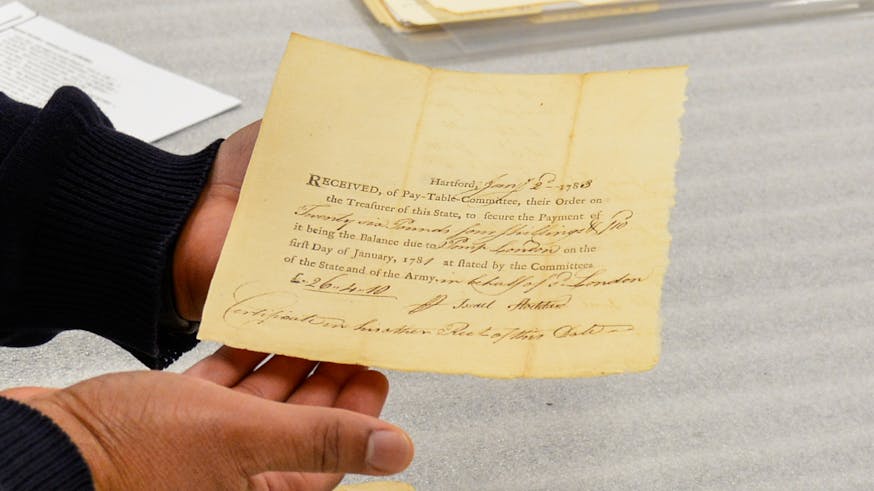News & Updates
Now on View: Five Years of Collecting the American Revolution
August 5, 2022
Our collection of more than 4,000 artifacts and documents is at the heart of the Museum's experience. The collection began more than a century ago, in 1907, when Reverend W. Herbert Burk started a two-year fundraising effort to acquire the tent that General George Washington used as his mobile headquarters during much of the Revolutionary War. In 1918, Burk established the Valley Forge Historical Society. Today, the Museum’s collection is part of the legacy of that organization.
We continue to add significant items to our collection through object donations and dedicated funding from donors to enhance the Museum’s multifaceted storytelling. We also strive to provide superior stewardship for our collection, to preserve it for generations to come.
In honor of our fifth anniversary, we are pleased to share these selections from our collecting and stewardship since we opened in 2017. These objects reflect our mission to uncover and share compelling stories about the diverse people and complex events that sparked America’s ongoing experiment in liberty, equality, and self-government. Some witnessed the Revolutionary War, while others reflect memories of that era or of that ongoing experiment.
See the display on view at the Museum in the Color Guard of the Pennsylvania Society of Sons of the Revolution case on the second floor through the end of 2022.
Washington’s Encampment at Valley Forge, 1840-1850

As members of the Revolutionary generation passed away during the early and mid-1800s, Americans memorialized their achievements, as this artist did. This work depicts Washington’s encampment at Valley Forge during the 1777-8 winter. Thanks to the generous support of American Express, we recently had this painting cleaned and secured in its frame to help preserve it for decades to come.
Map, Carte Nouvelle de l’Amerique Angloise…, 1776

British claims to North America are depicted on this map as those areas east of the Appalachian Mountains only. This was a typical French cartographic convention, which, along with its French text, identifies it as a map made for the French market.
Rebecca Young Ad in The Pennsylvania Packet, June 26, 1781

Rebecca Young advertised her flag-making business, located about a block from where the Museum stands today, on the front page. In addition to filling in details about a Philadelphia woman-owned business, this ad helps us to tell Rebecca’s story with one of our discovery cart programs.
Receipt for Blanket, 1777 & Pay Table Receipt, 1782

These documents are part of the Patriots of Color archive, a collection of 194 documents associated with African American and Native American Revolutionary War soldiers. The archive offers the opportunity for new insights about the experience of soldiers of color, as well as about the challenges in supplying and paying the Continental Army. The pay table receipt (right) is for Tuis Sharper who served as a private from 1777 to 1780 in the Connecticut line of the Continental Army.
Bunker Hill Monument Ribbons, 1825
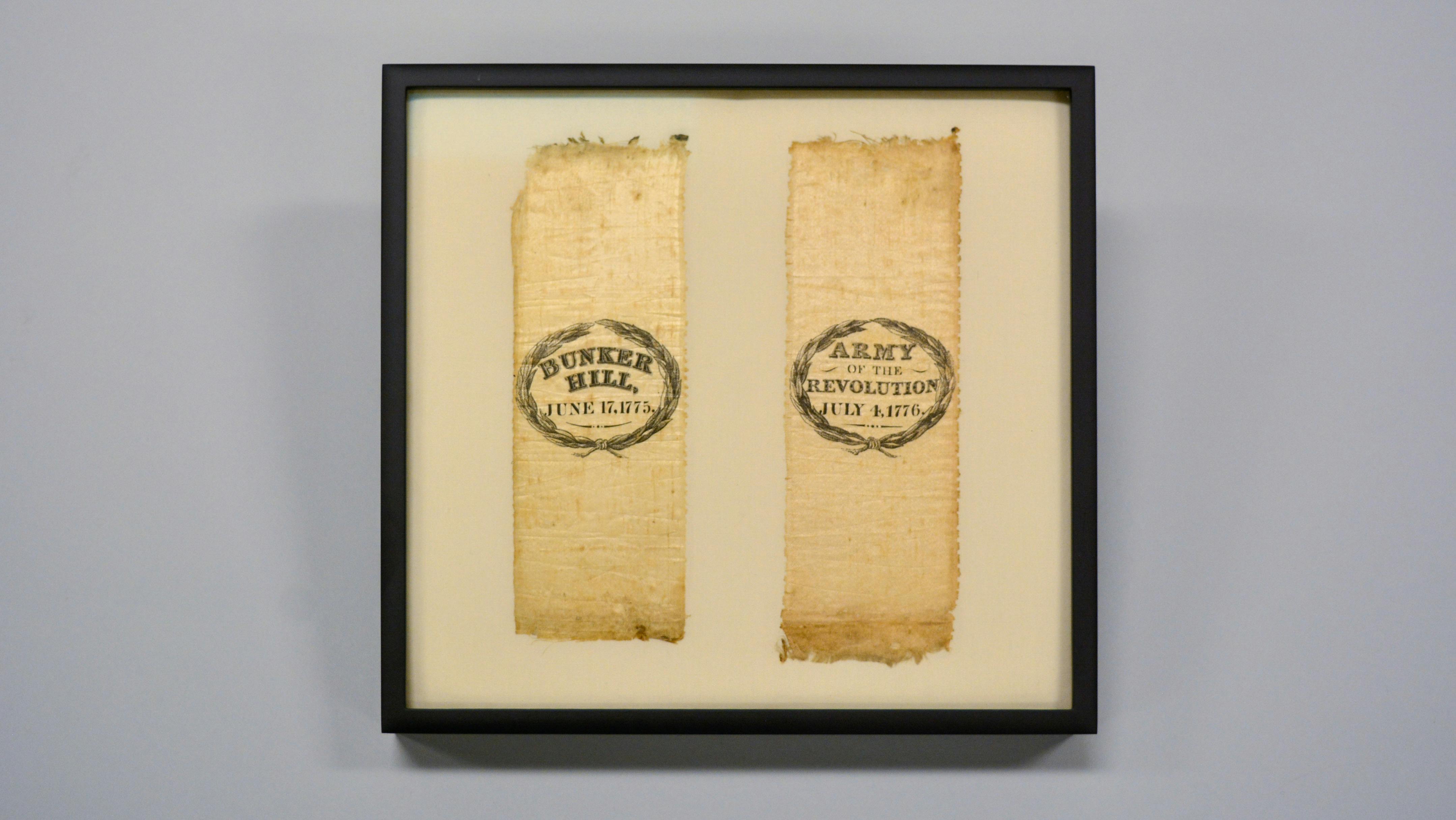
Forty veterans of the Battle of Bunker Hill, along with 190 Revolutionary War veterans, attended a 50th anniversary event in 1825 and wore ribbons like these. These ribbons are thought to have been worn by Lemuel Coffin of Newburyport, Massachusetts, who served from 1775 to 1779, including a stint in the “Commander-in-Chief’s Guard.”
The Juvenile Adventures of Christopher Hawkins, 1834

At the age of 13 in 1777, Christopher Hawkins left Providence, Rhode Island, and sailed on a privateer ship. This memoir, which he wrote at age 70 in 1834, details his experiences including being taken prisoner more than once and escaping. His story helps us to interpret the ship in our core exhibition.
Thomas Barber's Powder Horn, 1780

The map of eastern New York decorating this powder horn suggests that its owner, Thomas Barber, may have served in the area during the War of Independence. Along with drums, swords and the initials “GW,” the horn includes an element of the later seal of the United States, adopted in 1782 – a hand clutching a sheaf of 13 arrows. The 1782 seal would feature an eagle holding 13 arrows in its talon.
Queen Charlotte Teapot, circa 1762
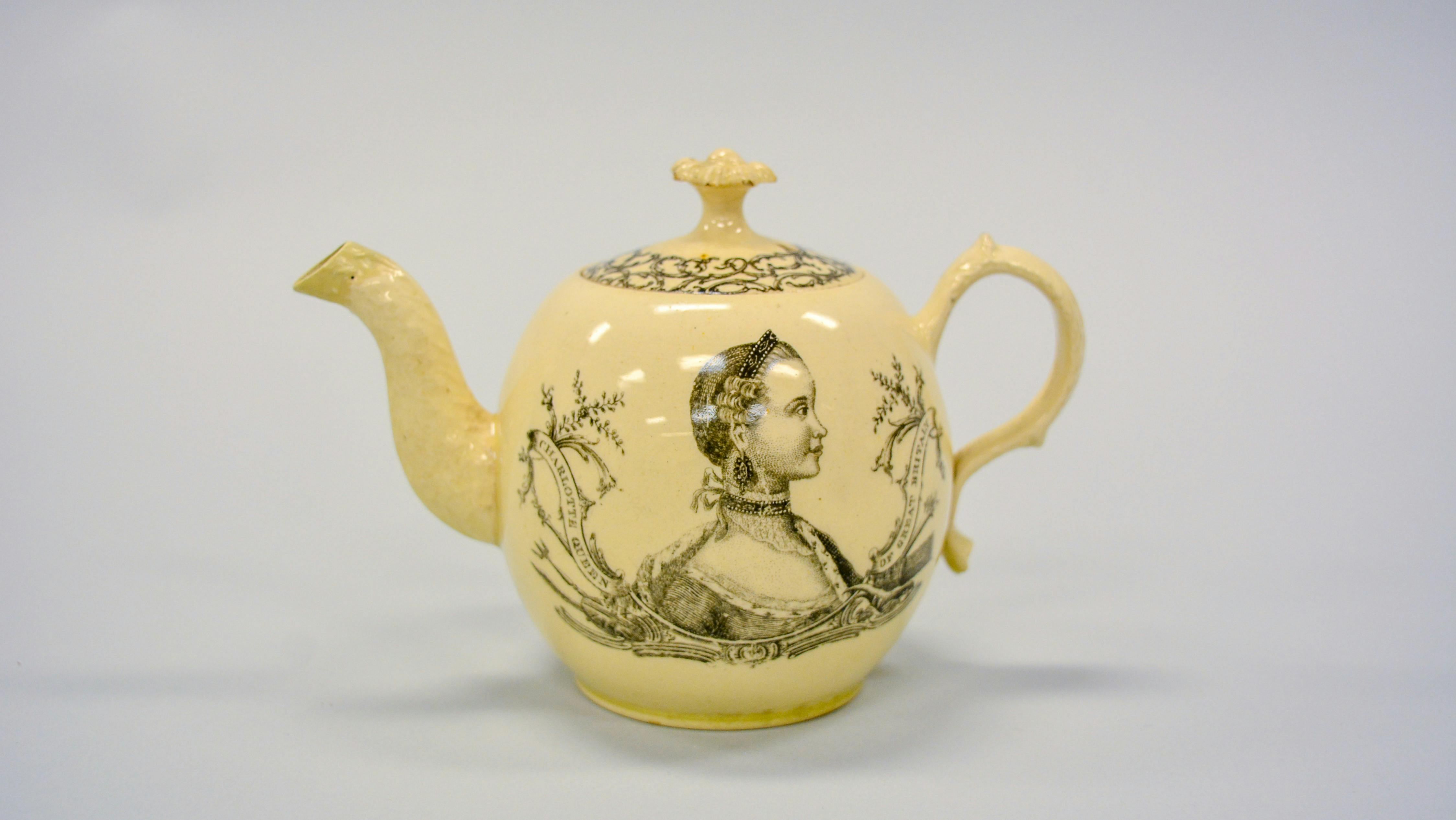
We recently acquired this teapot and several other English ceramic household items. All of these pieces demonstrate the way that consumer goods communicated political viewpoints in the lead up to – and during – the American Revolution. The Queen Charlotte teapot shows the English precedent for commemorating the reigning monarchs.
Portrait Miniature of Mary McIlvaine Bloomfield, circa 1778

Our When Women Lost the Vote exhibition featured Mary McIlvaine Bloomfield as a woman whom we believe voted in New Jersey in 1803. She was married to Joseph Bloomfield, Governor of New Jersey, who appears to have held more liberal views than many men of his era. The acquisition of this piece helps to fill a gap in our collection (objects related to women) and allows us to explore Mary’s story in future exhibits.
Mug, Plate, Teacup & Saucer

Starting in 2014, before the Museum was built, we conducted archaeological investigations of the site. We found 50 features, including privies, wells, and foundation walls, as well as 85,000 artifacts from the late 1700s through the early 1900s, including imported goods from Britain, Europe, and China and a large number of American, often Philadelphia, made objects. These are a few of the artifacts that illustrate life on our block in the 1700s.
Learn More
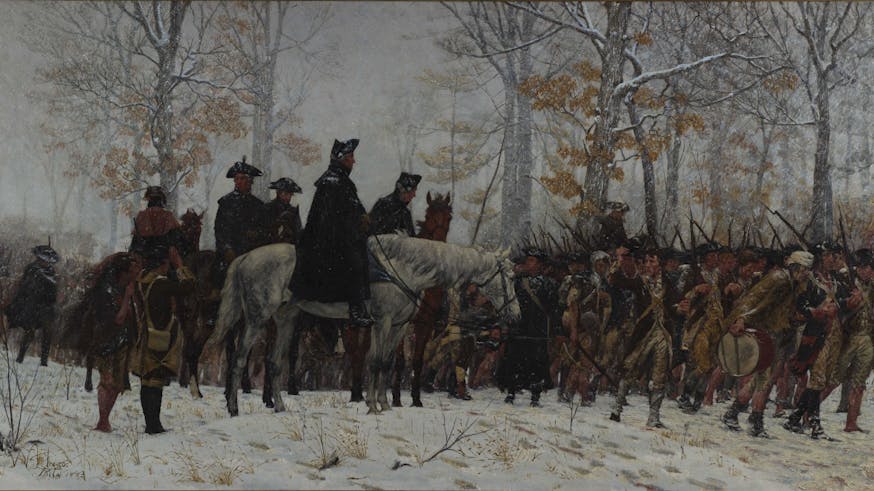
Collections Society
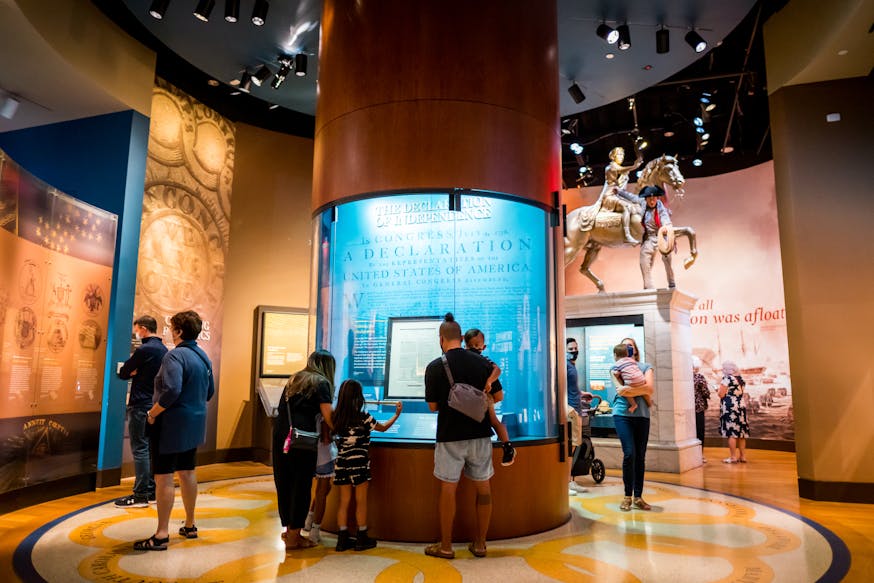
Plan Your Visit
